SCIENTIFIC EVALUATION
SCIENTIFIC EVALUATION
Michio Kaku is a theoretical physicist who specializes in string field theory — and in making scientific concepts understandable to a popular audience. This essay comes from his book Physics of the Impossible (2008), a collection of essays that examine the real science behind fictional ideas like death rays and invisibility cloaks.
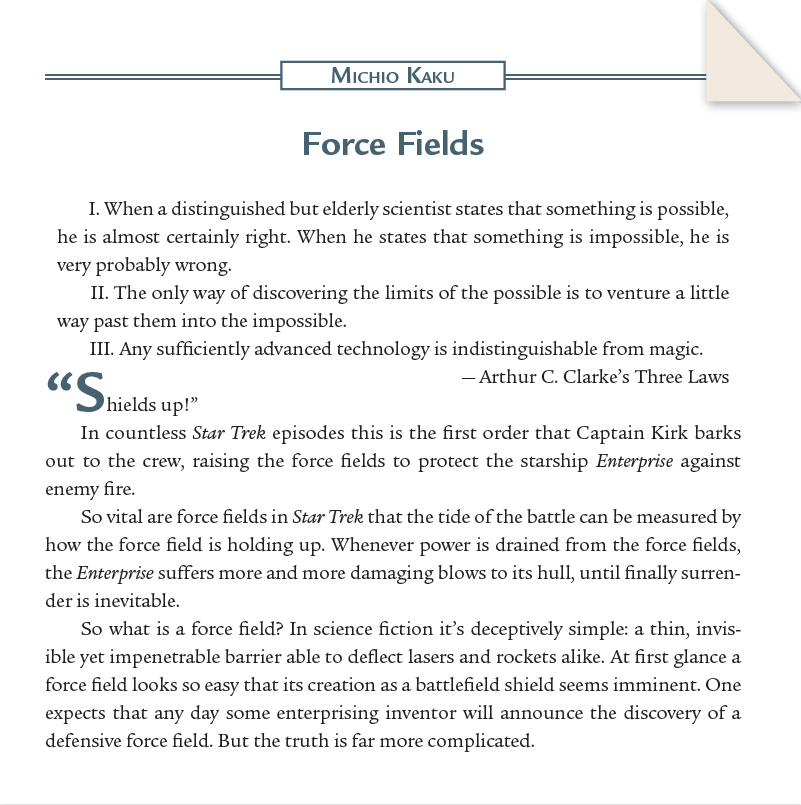
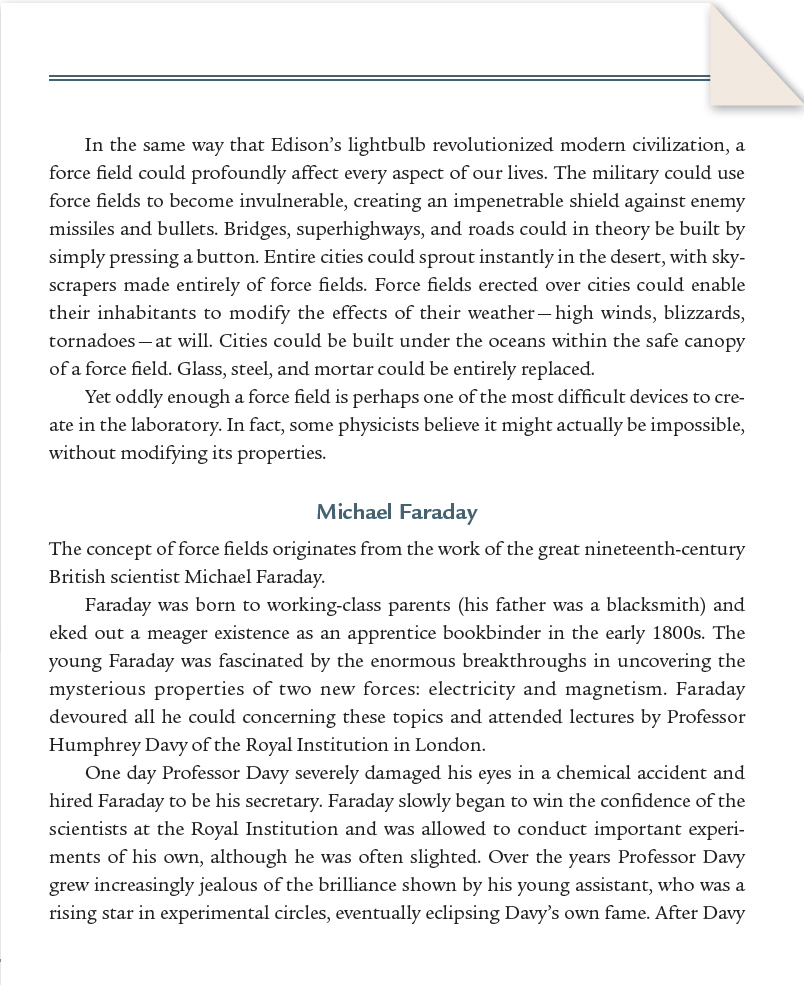
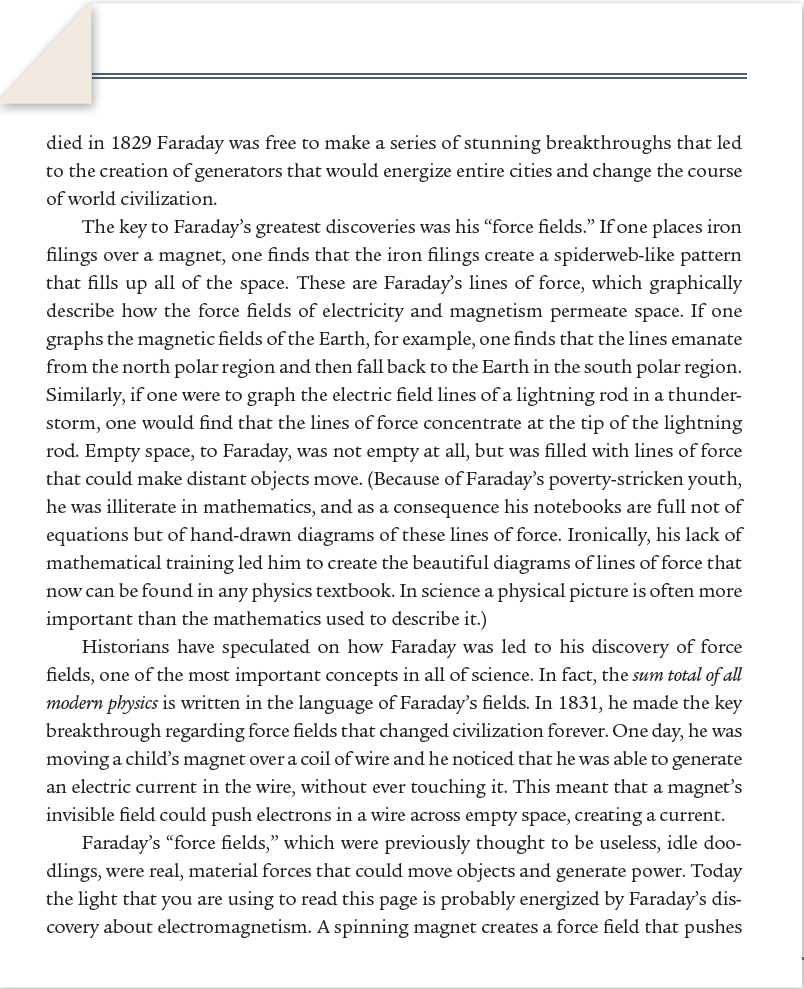
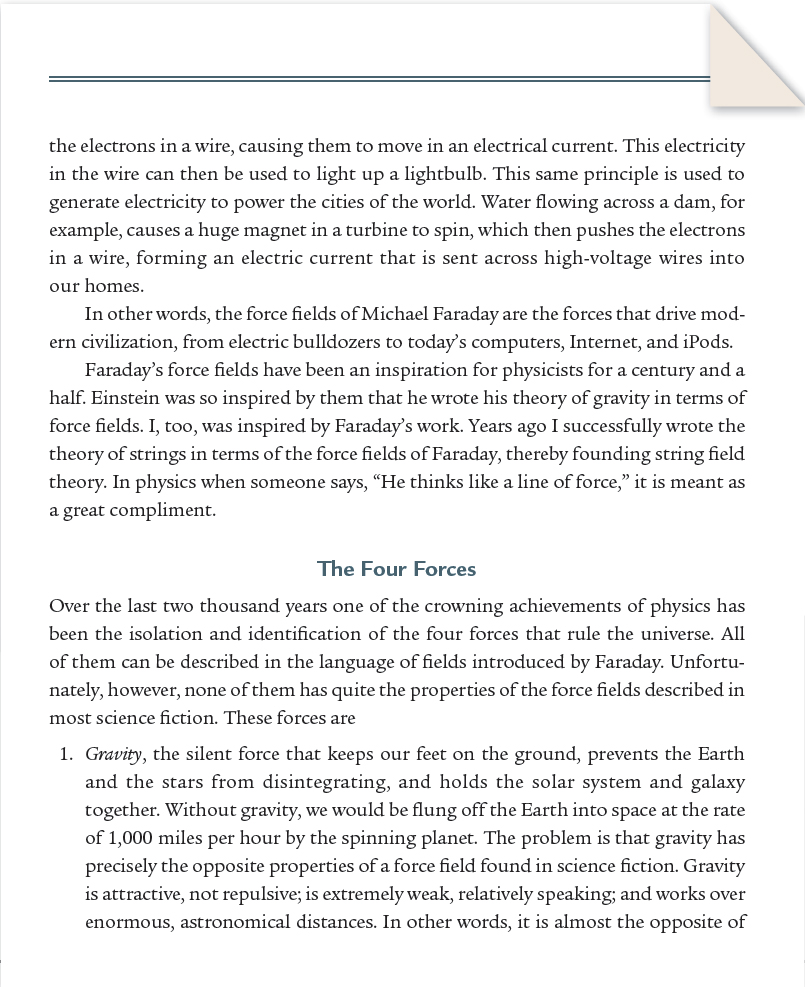
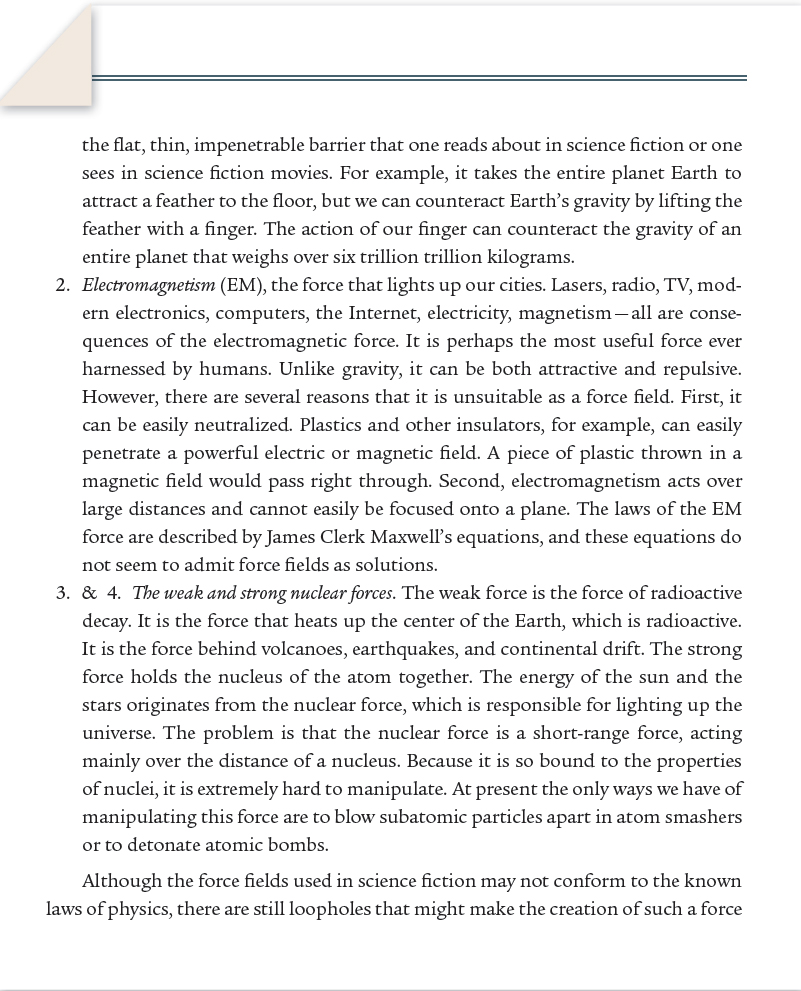
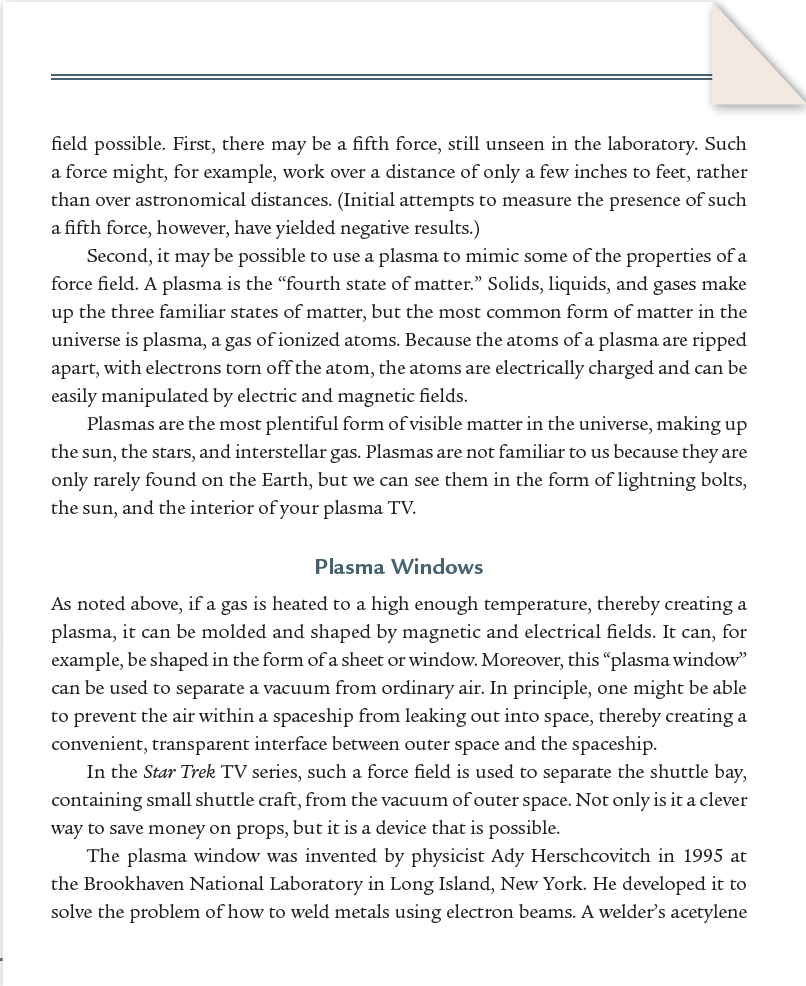
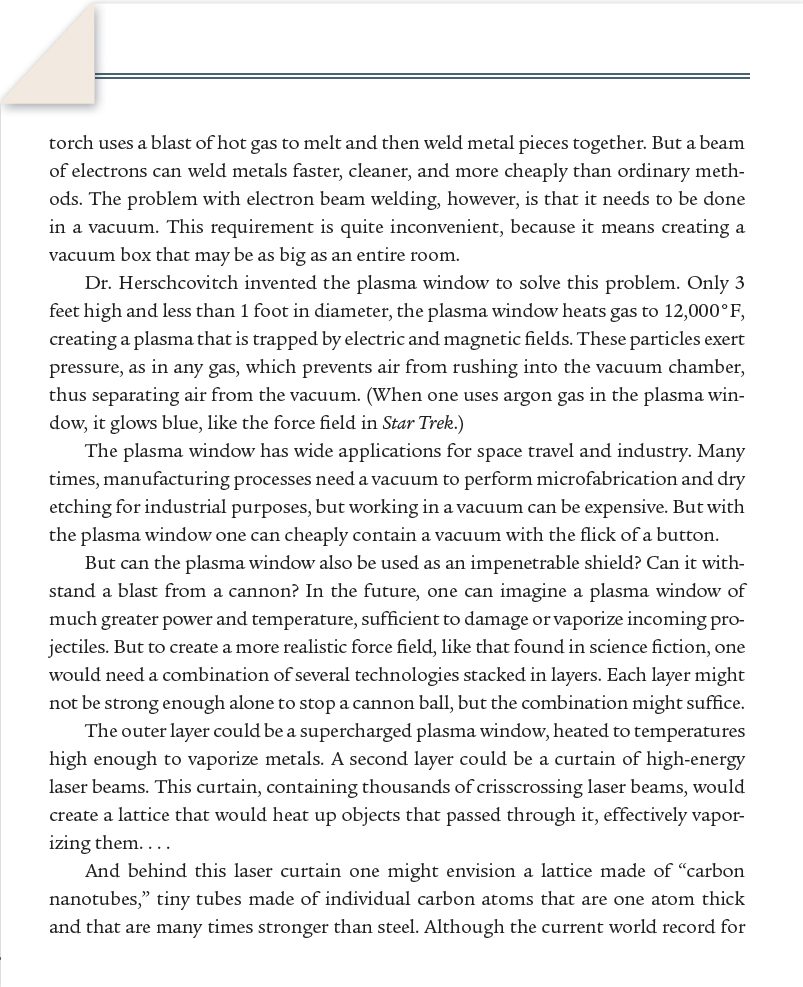
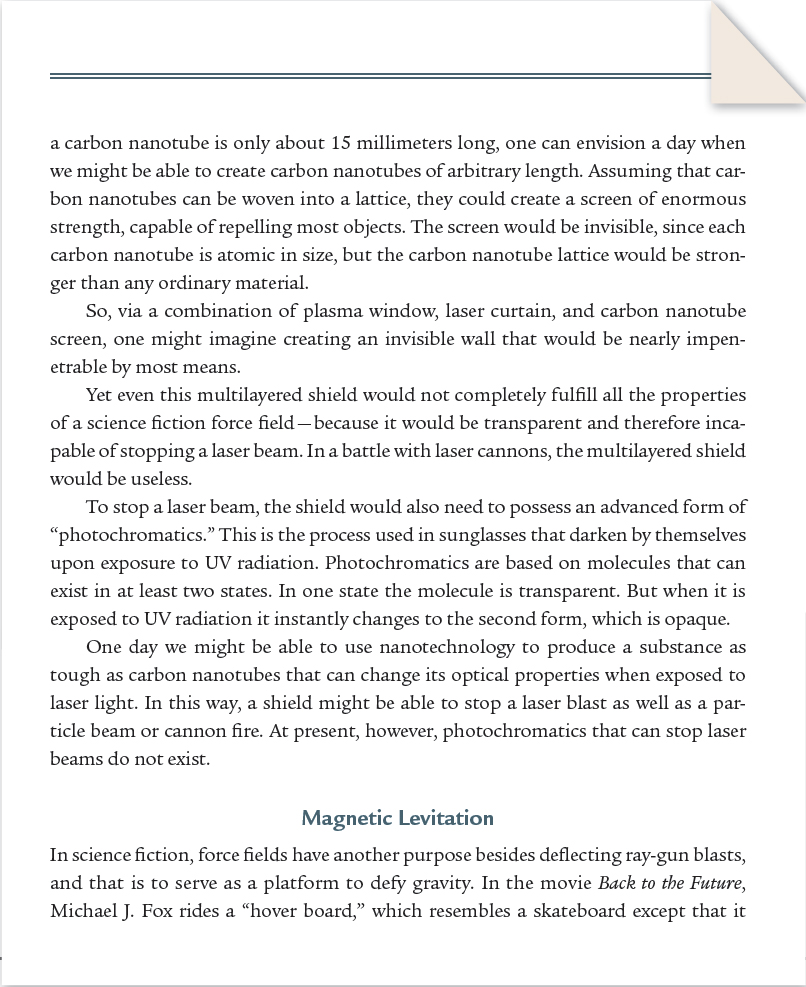
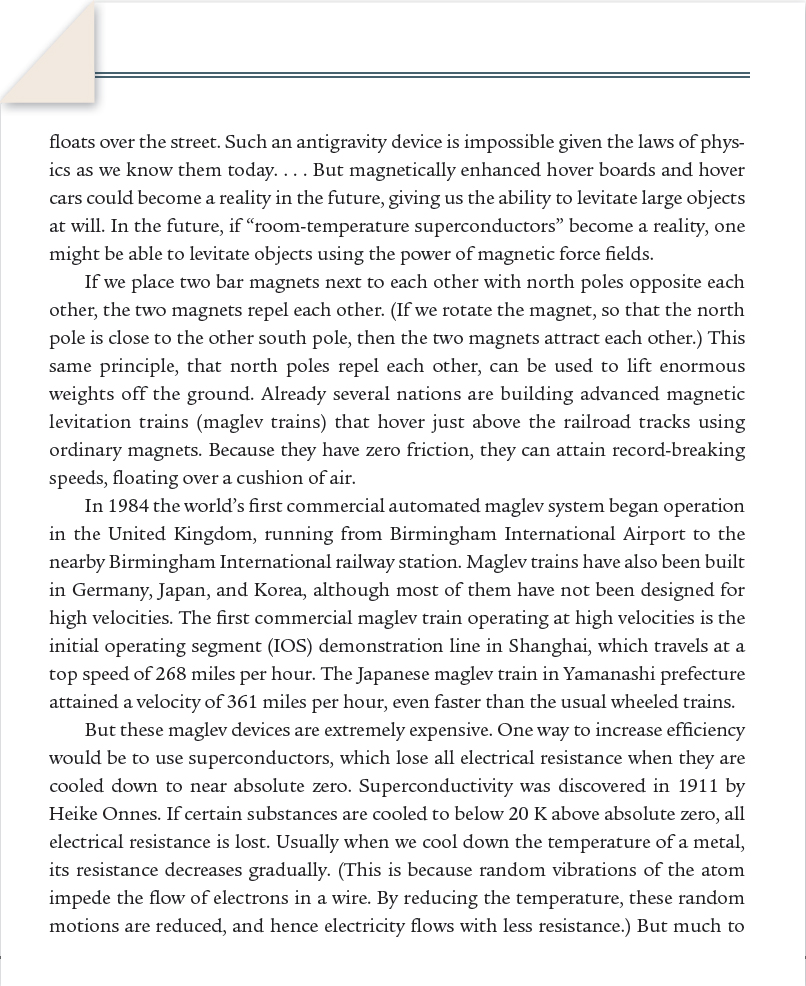
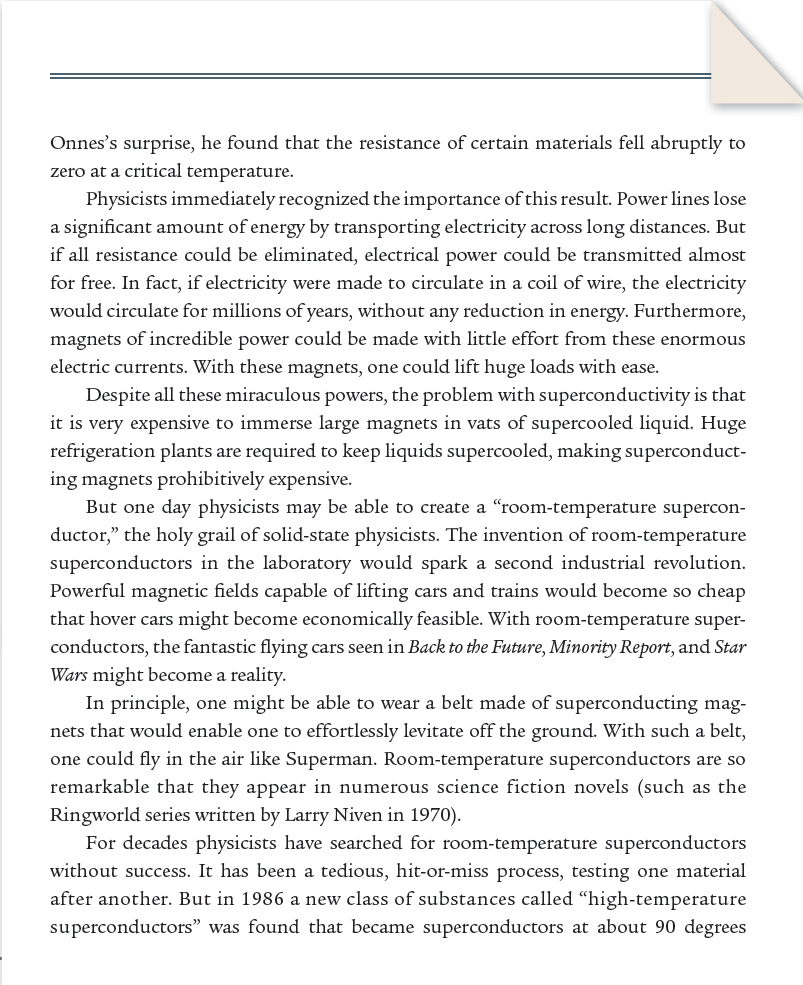
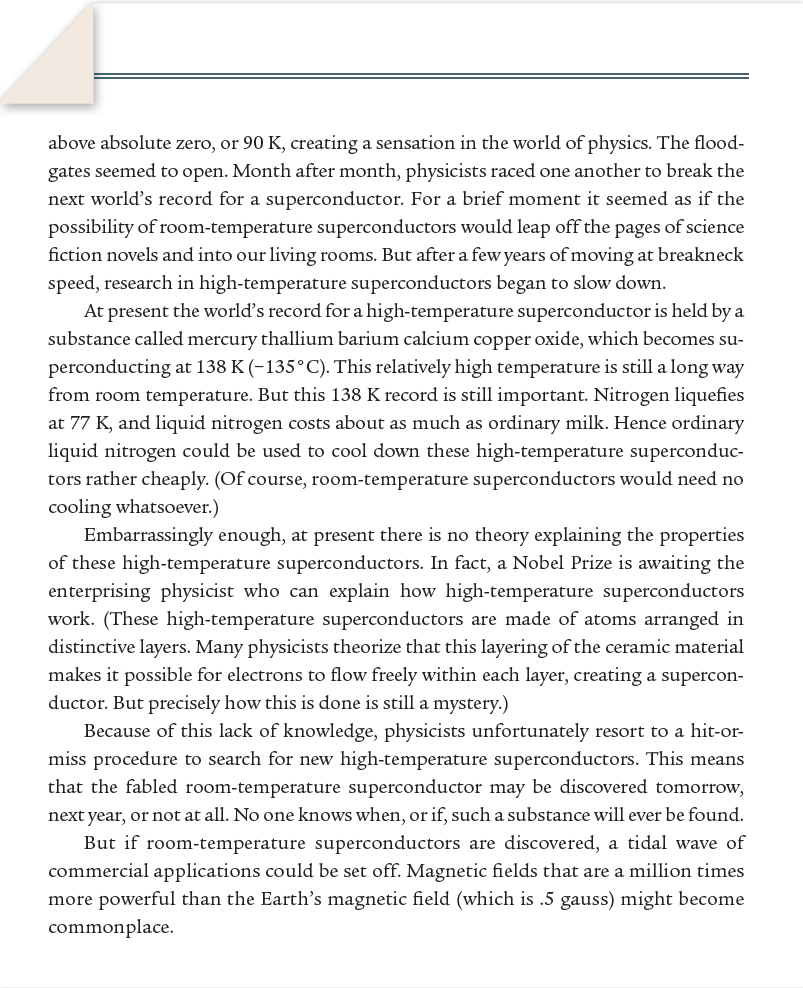
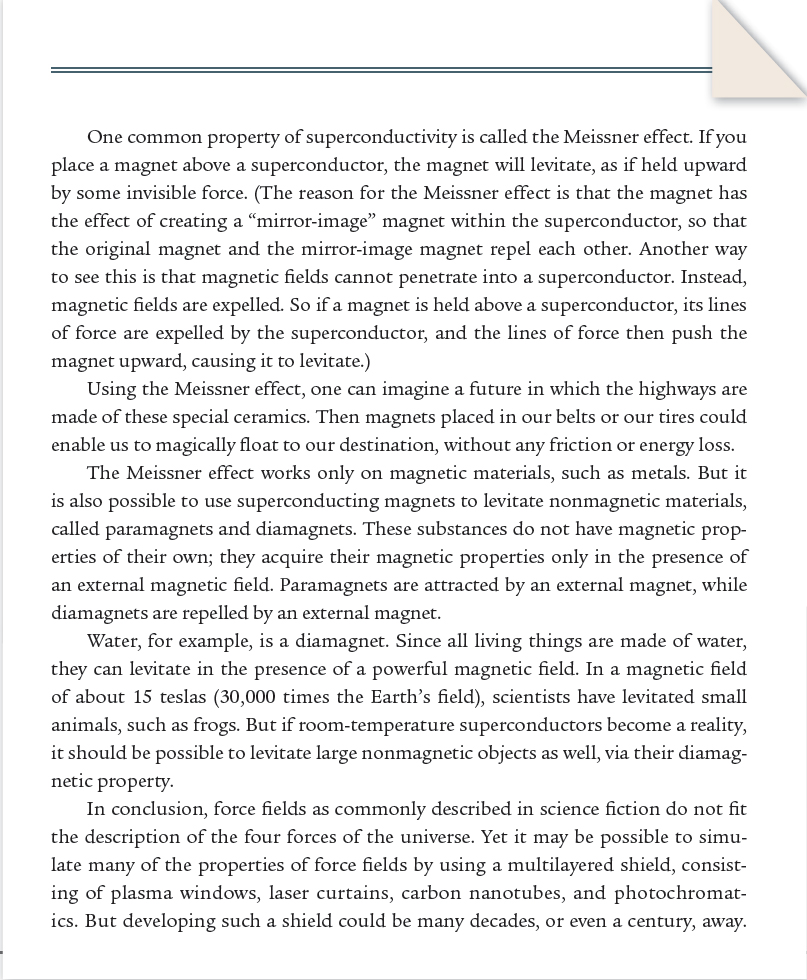

Reading the Genre
Question
. Kaku explains concepts on the cutting edge of theoretical physics. What strategies does he use to make these ideas understandable for readers who can’t count themselves among the smartest scientists in the world? (See “Write for novices”).
Question
1. At several points in this essay, a scientist is evaluating science fiction. What is the effect of reading an evaluation of popular culture by a serious scientist? How does the writer establish ethos, or authority to analyze texts that are not in his field of expertise? How might you do the same in your own writing? (See “Consider and control your ethos”, and “Consider how well reasoned a piece is”.)
Question
2. What qualities does Kaku suggest are necessary for force fields to become possible? How does he state these criteria and then apply them? How does he try to convince readers that these are valid criteria? (See “Finding and developing materials”.)
Question
3. Aside from the idea that having a force field would be fun, what uses (good or evil) does Kaku envision for this technology? What additional uses can you imagine?
Question
4. WRITING: Choose a technology you use every day. Then write an imaginary evaluation based not on what this technology is capable of now, but on what it might be capable of in the future. What might cell phones or televisions do ten years from now, for instance?
Question
5. WRITING: Watch a science fiction movie and evaluate it purely on the basis of science. How realistically does this movie, and the science within it, follow the laws of physics? You may want or need to focus on just one specific scene or one specific technology in the film.
Question
6. MULTIMODALITY—